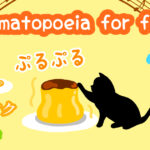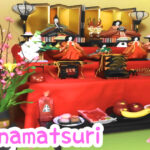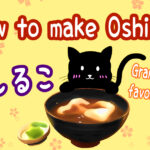-

-
How to say "just kidding!" in Japanese【with audio of native pronunciation】
2021/4/11 Japanese, Japanese grammar, just kidding, なんちゃって, なんてね, 冗談だよ
It’s always fun to crack jokes with your friends. When you tell a joke, you probably say “just kidding” or “I’m kidding” after the joke. We’ll share how to say “just kidding” in Japanese in this article. Justina There are lots of phrases that mean “just kidding” in Japanese! Atsuya We’ll also share about how to apologize when your joke was too much for your friend! How to say “just kidding” in Japanese 冗談(じょうだん)だよ When you want to say “just kidding,” you can say 冗談(じょうだん)だよ(jodan dayo). 冗談(じょうだん) means joke. だ is an auxiliary verb for determining something. よ is a ...
-

-
How to say I feel you in Japanese and some phrases to cheer up your friend or lover! 【with audio of native pronunciation】
2021/4/4 I feel you, Japanese, Japanese phrases, の気持ちよくわかるよ, 共感のフレーズ, 日本語
When your important friend or lover is down, the best way to support them is to say “I feel you.” Everyone appreciates it when someone says “I feel you” when they are in a hard situation. We’ll share about how to say “I feel you” in Japanese for your Japanese friend or lover in this article! JustinaOne of my friends had a hard time. How can I say “I feel you” in Japanese? You can say like "(friend name )の気持きもちよくわかるよ (~no kimochi yoku wakaruyo)" to your friend!Atsuya How to say I feel you in Japanese. ~の気持(きも)ちよくわかるよ (~no kimochi yoku wakaruyo) When ...
-

-
Asukayama park, One of the most famous Cherry blossom spot in Tokyo.
Asukayama Park (飛鳥山公園) There are many famous cherry blossoms viewing (ohanami) spots in Tokyo. Ueno park, Shinjuku-gyoen, and Chidorigafuchi are really famous ohanami spots, but there is another great place to see cherry blossoms in Tokyo! It is Asukayama kouen (or Asukayama Park) which is located in Oji area, 20 minutes by train from Tokyo Station! Asukayama Park is not as big as Shinjuku-gyoen or Yoyogi park, but it has 600 cherry blossom trees, so you can enjoy the view of cherry blossoms up close! JustinaWe will share about what Asukayama Park is like! Cherry blossoms are so beautiful!! Asukayama ...
-

-
How do you say spicy in Japanese ? Spicy level expressions and how to say you love spicy foods!
Many people’s image of Japanese food is mild, miso- or dashi-based food, but Japan also has a large variety of spicy foods. For example, Japanese curry (カレー) or tantan men (担々(たんたん)麺(めん)) are very popular for spicy food lovers! Have you ever wondered how to tell people what type of spicy food you like? In this article we’ll tell you about how to say "spicy" and different levels of spiciness in Japanese! JustinaI love spicy food! How can I say that? We'll share how to say that you love spicy food, too!Atsuya How do you say spicy in Japanese ? 辛(から)い ...
-

-
Japanese onomatopoeia for food ! -Part 2-
2021/3/14 Japanese, Japanese culture, onomatopoeia, オノマトペ, 日本文化, 日本料理, 日本語
Onomatopoeia is great way to express your feelings when you can't use ordinary words. Japanese has more than 4000 onomatopoeia! In our previous article, we shared about onomatopoeia for foods that are really common for Japanese people. Please check the link below if you haven't read it yet! Japanese onomatopoeia for food ! -Part1- - Nyapanese This article is our part 2 for food onomatopoeia. These onomatopoeia are for Japanese unique foods! JustinaWe will also share about onomatopoeia for the taste of food! You can understand how to say spiciness in Japanese onomatopoeia too!Atsuya Japanese onomatopoeia for food つるつる (tsuru-tsuru) ...
-

-
Japanese onomatopoeia for food ! -Part1-
2021/3/7 food, Japanese, Japanese culture, onomatopoeia, オノマトペ, 日本文化, 日本語, 食べ物
Crunch crunch, munch munch. There are many sounds you make when you eat or drink. Words that express sound are called onomatopoeia, and they don't just exist in English! It is said that Japanese actually has 4500 onomatopoeia! But here's the interesting part: they're not just for sounds! Japanese also has onomatopoeia to express motions, looks, condition, or how you feel. In regards to food, these can be jiggling or melty things. The second type of onomatopoeia are called mimetic words, or ideophones. They represent something that has no sound. For the rest of this article, we will refer to ...
-

-
What do Japanese do on Hinamatsuri (Girl's day)? 【Customs and Origin】
2021/3/1 HInamatsuri, Japanese culture, お内裏様, お雛様, ひな祭り, 三人官女, 五人囃子, 右大臣, 左大臣
Hinamatsuri (ひな祭り), which is called Doll's day or Girl’s Day in English, is one Japanese spring event on March 3rd. People celebrate and pray for girls' health and happiness. It is custom to display Japanese ornamental dolls on a tiered stand with a red carpet-like material and have a special meal with one's family. Justinaひな (hina) means doll in ancient Japanese , and 祭り (matsuri) means festival! We'll share not only what Hinamatsuri is like but also its origin and the history of Hinamatsuri!Atsuya Hinamatsuri (ひな祭り) is a calm spring festival with a special meal and beautiful Japanese dolls! Hinamatsuri ...
-

-
How to order drinks at Starbucks in Japanese! 【Native Japanese way】
Everyone wants to enjoy their trip with what they want to eat and drink. It's one of the most important things for a great stay in Japan. Do you want to drink your favorite coffee in a Japanese Starbucks? Great! Here is a perfect guide on how to order drinks at Starbucks in Japanese! JustinaWe'll share not only how to order, but also what to do when you don't understand what the staff said! How to order drinks at Starbucks in Japanese The basic order is the same as in any other country. You tell them the size first, a ...
-

-
Grandma's favorite Oshiruko recipe! Japanese sweet red bean soup with mochi.
2021/5/18 azuki bean, Japanese food, Japanese sweets, mochi, oshiruko, あずき, おしるこ, おばあちゃん直伝, もち, 甘味
Oshiruko(おしるこ) : Japanese sweet red beans soup with grilled mochi! Oshiruko おしるこ Oshiruko (おしるこ) is a traditional Japanese treat made out of red azuki(あずき) bean soup with mochi (もち) ! It’s often eaten in winter, as the dish is served warm, but it can be eaten in any season. Oshiruko has been eaten as far back as the Edo period, right after farmers began growing sugar. Azuki beans あずきまめ Azuki beans naturally grow all around East Asia. In Japan, they’re the second most cultivated legume, right after the soybean. You’d think so, since they’re used in many traditional Japanese treats besides ...
-

-
Imperial palace running: a famous running course in Tokyo!
2021/2/7 imperial palace running, Japan, Japanese life, Kokyo running, 東京ビジネス街, 皇居, 皇居ランニング
Tokyo is a great town for entertainment and travel, but it is also a great town for exercise. 皇居(こうきょ)ランニング(Koukyo running, or imperial palace running) is the nickname for a famous course for joggers and runners that spans around the imperial palace of Japan. The course is popular for office workers working in Tokyo because the imperial palace is in the center of the Tokyo business area. Some people do koukyo running before or after work. In this article, we will talk about koukyo running, covering the course, manners, and how to enjoy koukyo running. AtsuyaKoukyo running is a must-run course ...
